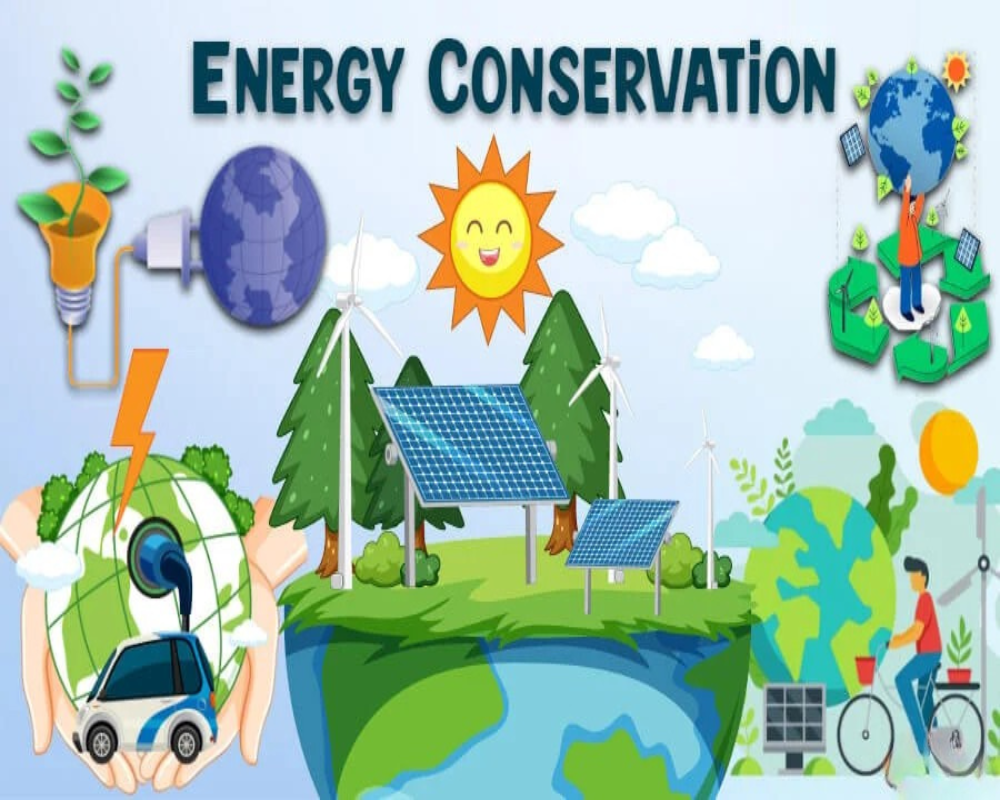Introduction
Energy conservation in industry refers to the strategic reduction of energy consumption without compromising productivity, safety, or product quality. It is a crucial component of sustainable industrial development, helping to reduce operational costs, improve efficiency, decrease greenhouse gas emissions, and enhance competitiveness. Given that industries account for a significant share of global energy use, adopting energy conservation techniques is both an environmental responsibility and a business necessity.
Modern industrial operations are increasingly turning to energy-efficient technologies, automation, and innovative design to minimize energy waste and achieve long-term sustainability goals. These conservation techniques can be applied across various industrial systems, including lighting, heating, cooling, compressed air, motors, and production processes.
Process Optimization and Equipment Efficiency
One of the most effective ways to conserve energy in industry is by optimizing manufacturing processes. This includes eliminating unnecessary steps, improving equipment layout, and streamlining workflow to reduce idle time and energy loss. Employing high-efficiency motors, variable frequency drives (VFDs), and automated control systems allows machines to operate only when needed and at appropriate speeds, thereby reducing energy consumption.
Regular maintenance of machinery ensures that equipment operates at peak efficiency. Poorly maintained systems often consume more energy due to friction, leaks, or outdated components. Implementing predictive maintenance technologies helps identify energy-draining issues before they become serious problems.
Efficient Lighting Systems
Lighting is a major contributor to energy use, particularly in large industrial facilities. Replacing traditional lighting systems with LEDs or CFLs can reduce energy consumption by up to 70%. Installing motion sensors, daylight harvesting systems, and automated timers ensures that lights are used only when and where necessary.
Factories can also maximize natural daylight through architectural design improvements, skylights, and reflective surfaces, further reducing the need for artificial lighting during the day.
Thermal Energy Management
Industries that rely on boilers, furnaces, and other heat-generating equipment can achieve significant energy savings through waste heat recovery. Installing economizers, heat exchangers, and recuperators allows facilities to capture and reuse excess heat for preheating feedwater or air, thereby improving overall thermal efficiency.
Proper insulation of steam lines, tanks, and heat distribution systems prevents energy losses and reduces the load on heating systems. Using energy-efficient boilers and maintaining correct steam pressure levels also contribute to reducing fuel consumption.
Compressed Air System Optimization
Compressed air is one of the most inefficient forms of energy use due to the high energy cost of producing it. Energy conservation in this area involves detecting and fixing leaks, lowering pressure settings, and shutting down compressors during non-operational hours. Upgrading to energy-efficient air compressors and using variable speed controls can lead to major energy and cost savings.
Regular audits of compressed air systems help identify inefficiencies and suggest modifications in usage patterns or system design.
Cooling and Ventilation Efficiency
Industrial cooling systems such as chillers, cooling towers, and HVAC units consume substantial energy. Conservation techniques include using energy-efficient chillers, variable speed fans, and smart climate controls. Free cooling systems that use ambient air during cooler months and evaporative cooling systems for dry climates are alternative methods that reduce dependence on mechanical cooling.
Zoning strategies and demand-based ventilation can also ensure that only necessary areas are cooled or ventilated based on occupancy or process requirements, minimizing waste.
Energy Monitoring and Management Systems (EMS)
Installing energy monitoring and management systems enables industries to track energy consumption in real time and identify high-energy-consuming areas or patterns. These systems provide insights that help managers set conservation targets, evaluate the effectiveness of implemented measures, and adjust operations for optimal efficiency.
Data collected from EMS tools can be used for reporting, benchmarking, and making investment decisions related to energy-saving technologies.
Load Management and Demand Side Strategies
Industries can conserve energy by implementing load management techniques such as shifting non-critical operations to off-peak hours when electricity demand and tariffs are lower. Peak shaving, demand response programs, and load balancing reduce stress on energy infrastructure and help control operational costs.
Integration of Renewable Energy Sources
To further reduce dependence on conventional energy sources, industries are increasingly integrating renewable energy systems such as solar photovoltaic (PV) panels, biomass boilers, and wind turbines into their facilities. These systems not only supply clean energy but also reduce exposure to volatile energy prices and contribute to carbon neutrality goals.
Hybrid systems combining renewables with battery storage or grid power ensure energy security and smooth load transitions.
Employee Awareness and Behavioral Change
Encouraging an energy-conscious culture within the organization is a low-cost yet effective way to drive conservation. Training employees to turn off unused equipment, report leaks, and follow energy-efficient procedures can collectively lead to noticeable savings. Establishing energy conservation teams, setting departmental energy targets, and recognizing energy-saving achievements can reinforce positive behavior.
Conclusion
Energy conservation techniques in industry are vital for reducing environmental impact, lowering operational costs, and enhancing competitiveness in a resource-constrained world. From upgrading equipment and optimizing processes to integrating renewables and fostering a culture of energy efficiency, industries have a wide array of tools and strategies at their disposal. As regulations tighten and stakeholders demand greener practices, proactive energy conservation is no longer optional—it is a strategic priority that supports long-term sustainability and industrial excellence.
Hashtags
#EnergyConservation #SustainableIndustry #GreenManufacturing #EnergyEfficiency #IndustrialSustainability #EcoFriendlyPractices #WasteReduction #RenewableEnergy #EnergyManagement #CarbonFootprint #SmartManufacturing #ResourceEfficiency #CleanTechnology #EnergySavings #SustainablePractices #IndustrialInnovation #EnergyAudit #ProcessOptimization #CircularEconomy #EcoInnovation


